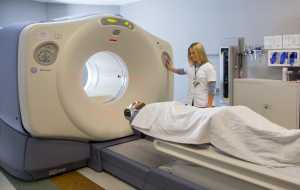10 Nov FDG-PET Scans of Lung Nodules Should Be Interpreted With Caution
MedicalResearch.com Interview with:
Amelia W. Maiga, MD MPH
Vanderbilt General Surgery Resident
VA Quality Scholar, TVHS
MedicalResearch.com: What is the background for this study? What are the main findings?
Response: Positron emission tomography (PET) combined with fludeoxyglucose F18 (FDG) is currently recommended for the noninvasive diagnosis of lung nodules suspicious for lung cancer. Our investigation adds to growing evidence that FDG-PET scans should be interpreted with caution in the diagnosis of lung cancer. Misdiagnosis of lung lesions driven by FDG-PET avidity can lead to unnecessary tests and surgeries for patients, along with potentially additional complications and mortality.
To estimate FDG-PET diagnostic accuracy, we conducted a multi-center retrospective cohort study. The seven cohorts originating from Tennessee, Arizona, Massachusetts and Virginia together comprised 1188 nodules, 81 percent of which were malignant. Smaller nodules were missed by FDG-PET imaging. Surprisingly, negative PET scans were also not reliable indicators of the absence of disease, especially in patients with smaller nodules or who are known to have a high probability of lung cancer prior to the FDG-PET test.
Our study supports a previous meta-analyses that found FDG-PET to be less reliable in regions of the country where fungal lung diseases are endemic. The most common fungal lung diseases in the United States are histoplasmosis, coccidioidomycosis and blastomycosis. All three fungi reside in soils. Histoplasmosis and blastomycosis are common across much of the Mississippi, Ohio and Missouri river valleys and coccidioidomycosis is prevalent in the southwestern U.S. These infections generate inflamed nodules in the lungs (granulomas), which can be mistaken for cancerous lesions by imaging.
MedicalResearch.com: What should clinicians and patients take away from your report?
Response: The bottom line is that FDG-PET scans should be interpreted with caution for the diagnosis of lung cancer, and the results individualized to each patient. In patients with a high likelihood of cancer (>60%), a negative FDG-PET does not rule out cancer and biopsies may be required to ensure that cancer is not missed. On the flipside, among patients who live where infectious lung diseases are common, FDG-PET may be falsely positive and lead to unnecessary testing.
MedicalResearch.com: What recommendations do you have for future research as a result of this study?
Response: Future studies may help us better understand how to integrate FDG-PET findings with other known patient characteristics that predict the probability of cancer (e.g., patient age, smoking history, family history, etc.) as well as individual blood tests and known geographical variation related to fungal lung diseases such as histoplasmosis that often masquerade as lung cancer.
MedicalResearch.com: Is there anything else you would like to add?
Response: FDG-PET scans provided little help in distinguishing cancer from benign granulomas when the result was negative, especially in patients with a high probability of cancer (>60%). In these highly suspicious lesions, a negative FDG-PET was not able rule out cancer, and aggressive pursuit of tissue is necessary to detect possible cancer.
MedicalResearch.com: Thank you for your contribution to the MedicalResearch.com community.
Citation:
Note: Content is Not intended as medical advice. Please consult your health care provider regarding your specific medical condition and questions.
[wysija_form id=”1″]
Last Updated on November 10, 2017 by Marie Benz MD FAAD

